Five Mountain Escapes for a Magical November
Discover five mountain destinations where crisp...
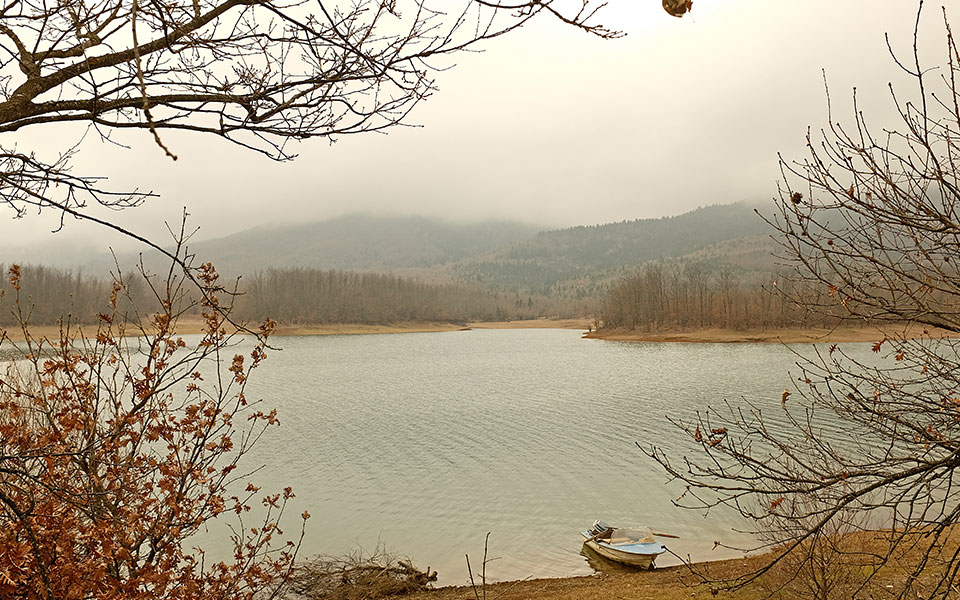
Lake Plastira
© Nikos Kokkas
In Karditsa, everyone seems to own a bike. It’s easy to see why. The town is small, and everything (sights, museums, and tavernas) is close by. In fact, the pins we added to our Google map are so close together, we can’t tell which one is which. There are no hills, and by walking or cycling you’ll quickly become familiar with the streets and learn to find your way around.
The people here are no house cats. They enjoy going out, and the cafes and meze restaurants are always full of people sipping tsipouro and playing backgammon. Living up to its name, Karditsa is situated in the very heart of Greece (Karditsa literally means little heart), and is smaller compared to the nearby cities of Larissa, Volos, and Trikala. Yet it is a great getaway and an excellent starting point for discovering the surrounding countryside, villages, and sights.
Lake Plastira is the most common excursion, but the city can also serve as a base for exploring the famous monasteries of Meteora, cosmopolitan Elati, Pyli, as well as the relatively little-known Smokovo thermal springs.
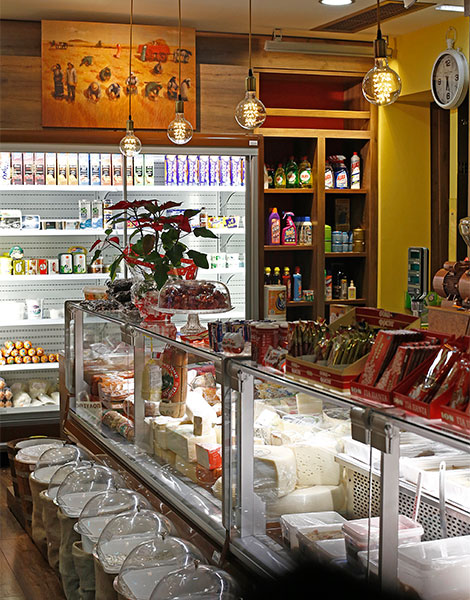
Saint Georges
© Nikos Kokkas
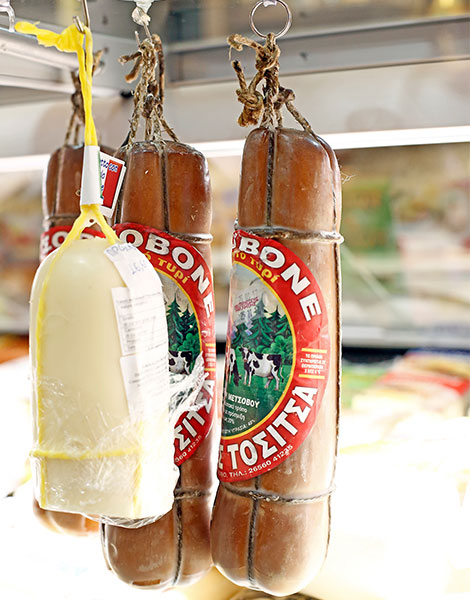
Saint Georges
© Nikos Kokkas
Hard to miss thanks to its vivid turquoise facade, the little store of Saint Georges gathers products from all over Thessaly under one roof. You’ll find sausages from Karditsa, strained sheep’s milk yogurt from Palama, cow’s milk yogurt from Petrohori, feta cheese from the Trikki dairy factory, ‘peach nectar’ from the Trikala-based fruit-juice company Kliafa, fir honey from Lake Plastira, and pulses by the pound. If you need to take a break from shopping, pull up a seat, as they also serve coffee and crepes.
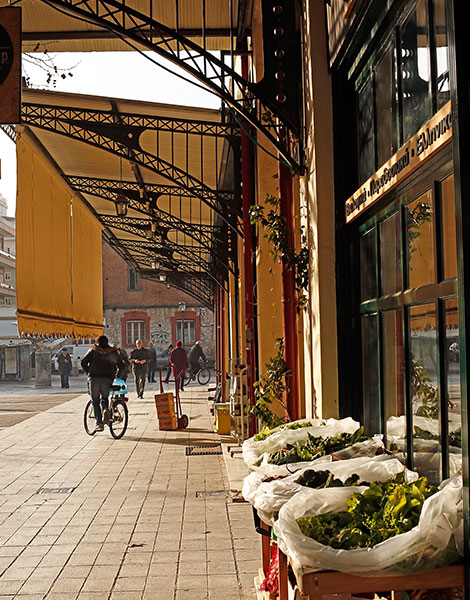
Municipal Market
© Nikos Kokkas
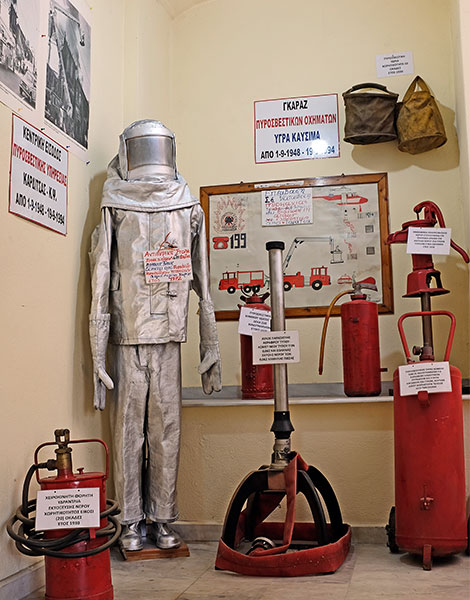
The Fire Fighting Museum located in the Municipal Market
© Nikos Kokkas
Built at the end of the 1920s, the old municipal market building is one of the most famous landmarks in Karditsa. Built from cement, metal, and glass, the large square market is eye-catching, but unfortunately it is almost abandoned.
It does however house one of the most interesting museums in the city. The old offices of the fire brigade, where they were headquartered from 1948 to 1994, have been turned into a museum, featuring handmade signage and historic artifacts such as a water pump from 1930 and a fireman’s outfit weighing 24 kilos, in which a firefighter could withstand temperatures up to 1.200 degrees C for two minutes.
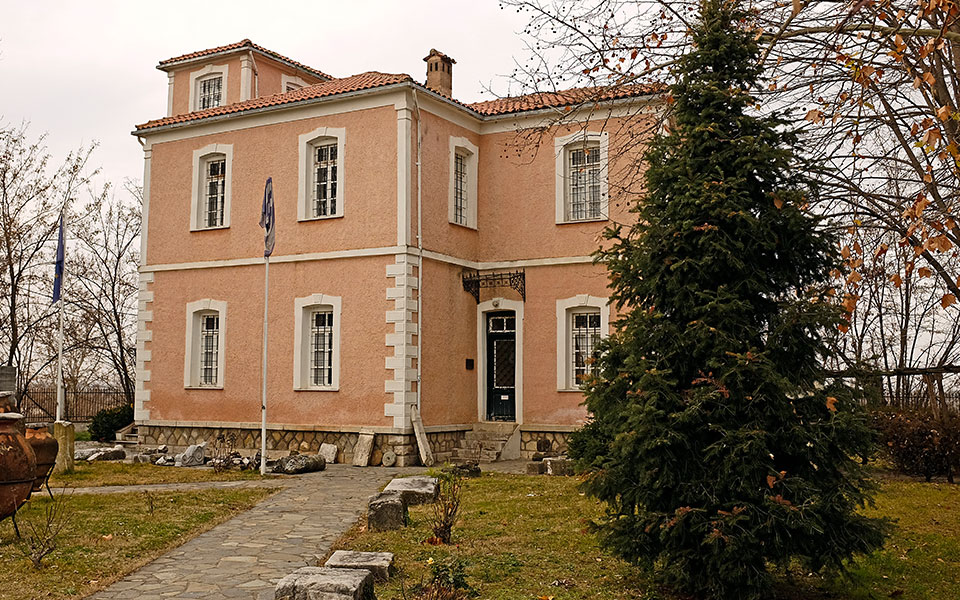
© Nikos Kokkas
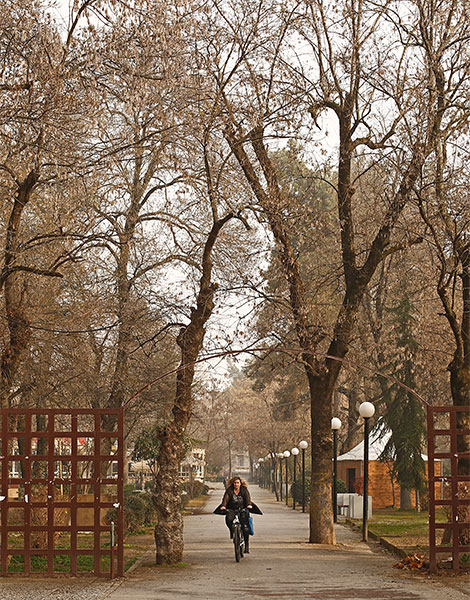
Pafsilypou park
© Nikos Kokkas
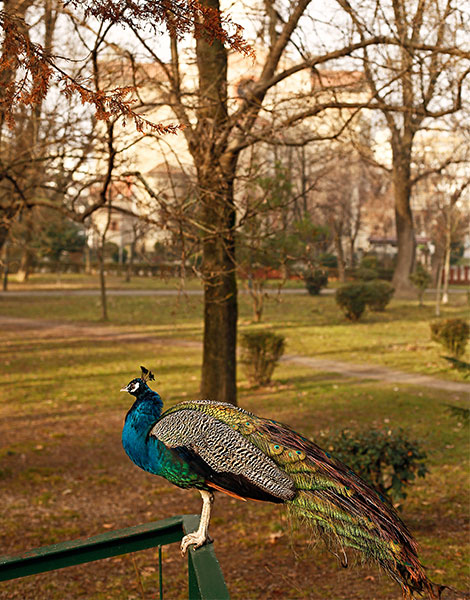
Pafsilypou park
© Nikos Kokkas
Pafsilypou Park, in the center of the city, is one of the most famous places to visit. Designed by Georgos Foskolos at the beginning of the 20th century, supported by the mayor Stergios Lappas, it was the home of the livestock market and the trade fairs.
Today, the park is home to a flock of peacocks that roam freely, and flirt like only these spectacular birds can. Stay for a bit and watch the blue-necked males open their trains like fans and show off their gorgeous colors to the females while letting out their mating calls.
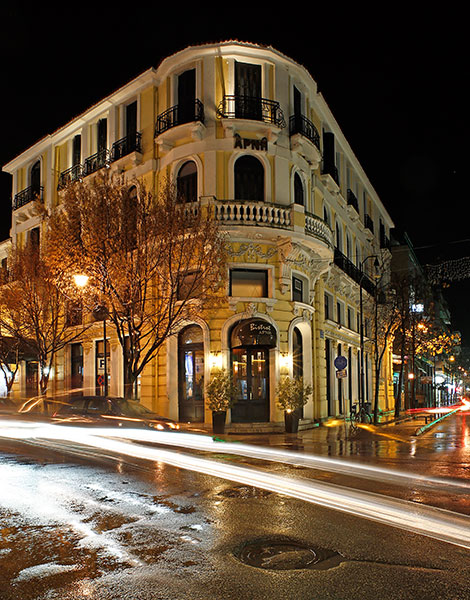
Bistrot Arni
© Nikos Kokkas
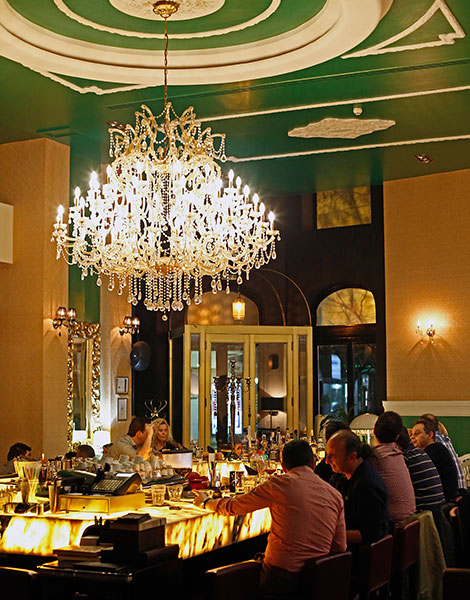
Bistrot Arni
© Nikos Kokkas
The bistro at the hotel Domotel Arni, which opened about 4 years ago, is something out of the ordinary. Here you feel like you’ve landed somewhere between Paris, Vienna and Amsterdam. Locals gather early in the day for coffee, but it’s at its very best in the evening.
Chef Apostolis Stergiopoulos has created a menu that focuses mainly on Italian flavors (think tagliolini with tomato sauce, and osso bucco Milanese), but also includes Greek touches (like the fried Mytilene cheese), as well as dishes from around the world (spring rolls with shrimp and chorizo).
The drinks menu includes a lengthy wine list, nice whiskies, as well as classic and signature cocktails. Once a month, guest chefs present themed nights focused on different cuisines, such as Mexican, Japanese, Chinese, and street food. The next one, at the end of February, will feature a menu of local products prepared with molecular cooking techniques.
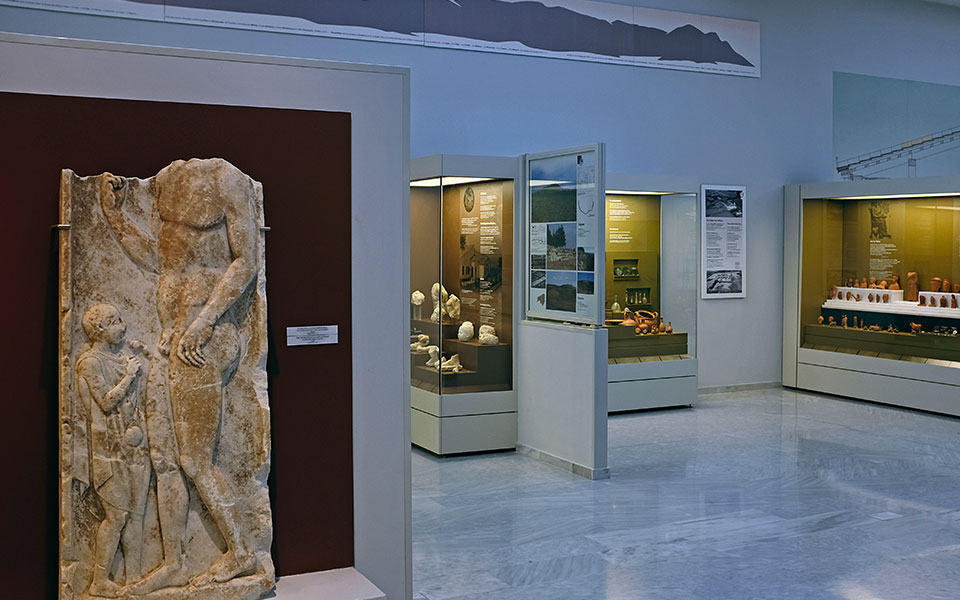
Archaeological Museum of Karditsa
© Nikos Kokkas
Small, but well curated, the Archaeological Museum of Karditsa offers a taste of the area’s rich history. You will learn much about Neolithic households, as well as the day-to-day lives of people in Thessaly during the Bronze Age: where and how they lived, what they produced (barley, peas, and lentils), what they hunted (deer and rabbit), and what they imported (obsidian from Milos and lead from Lavrio).
Among the artifacts on display are equine figurines from the 5th c. BC, ancient coins, a marble child’s hand holding a bird by its feet dating to the 4th or 3rd c. BC, and a bronze statue of Apollo (6th c. BC).
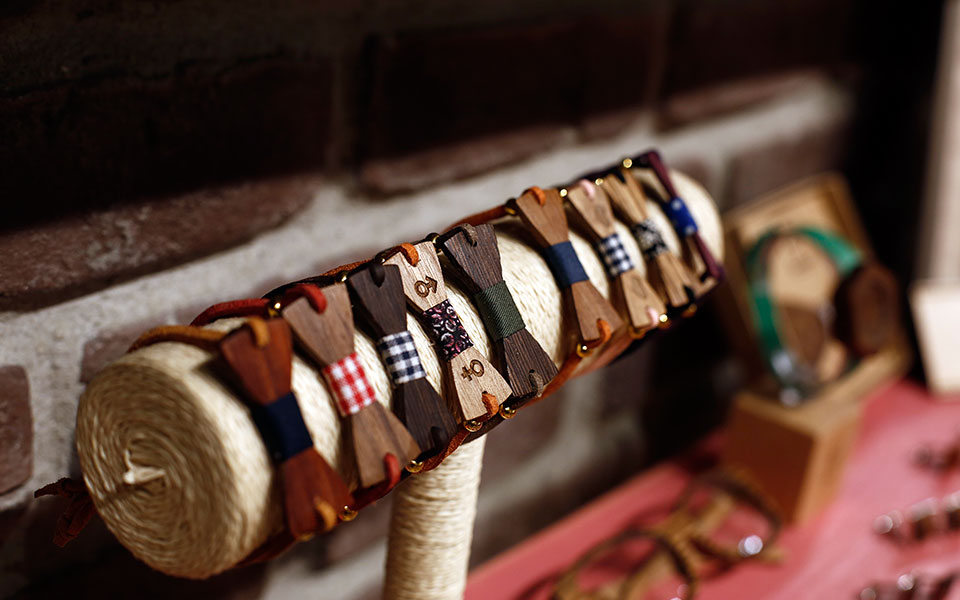
Little Fabrica
© Nikos Kokkas
Homey and warm, when you enter Little Fabrica you get the urge to take of your shoes and take all the time in the world to go through the racks of clothes, feeling all of the soft fabrics, like you might do in the closet at a friends house. This unique boutique, run by Ermina Kehagia and Stamatis Nediliakis, is worth a visit.
The women’s clothing is all chosen with care and taste, and the accessories from 27 Wooden Accessories (made by Stamatis) are the perfect gifts. The wooden bowties are particularly fun.
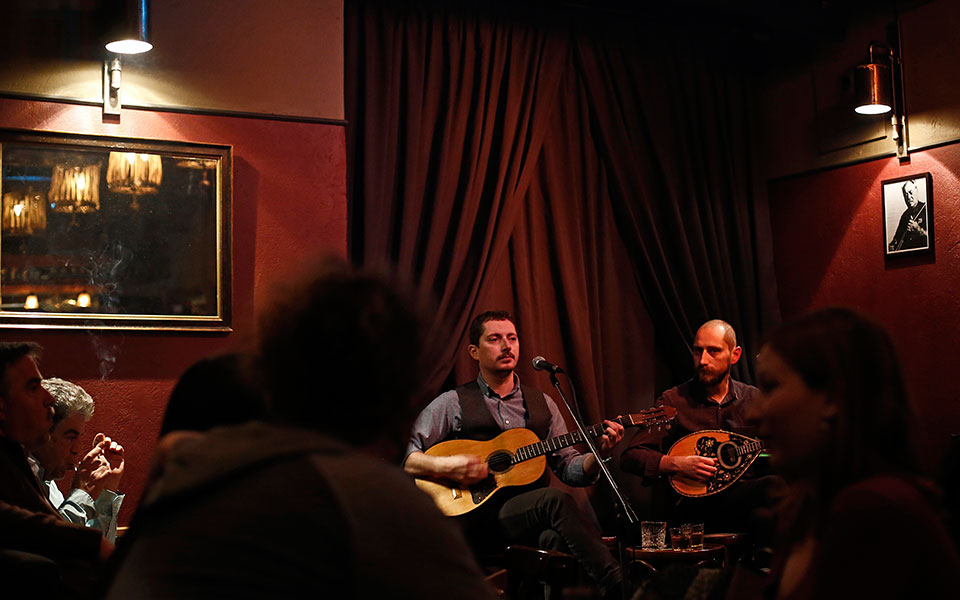
Rebetiko
© Nikos Kokkas
The live music played at the traditional musical cafe/bar Rebetiko consists of works by distinguished rebetiko composers, such as Tsitsanis, Chiotis and more. These urban songs, traditionally sung by the working class, are performed by the two young brothers Konstantinos and Fanis who make up the basic duet.
The brothers are schooled in violin, and more or less self-taught in traditional Greek music. They perform with a sense of humor, adding something fresh and new to the genre. Rebetiko is open every day; in the morning it is great for coffee and board games, and you can hear the brothers play every Thursday-Saturday after 23.00.
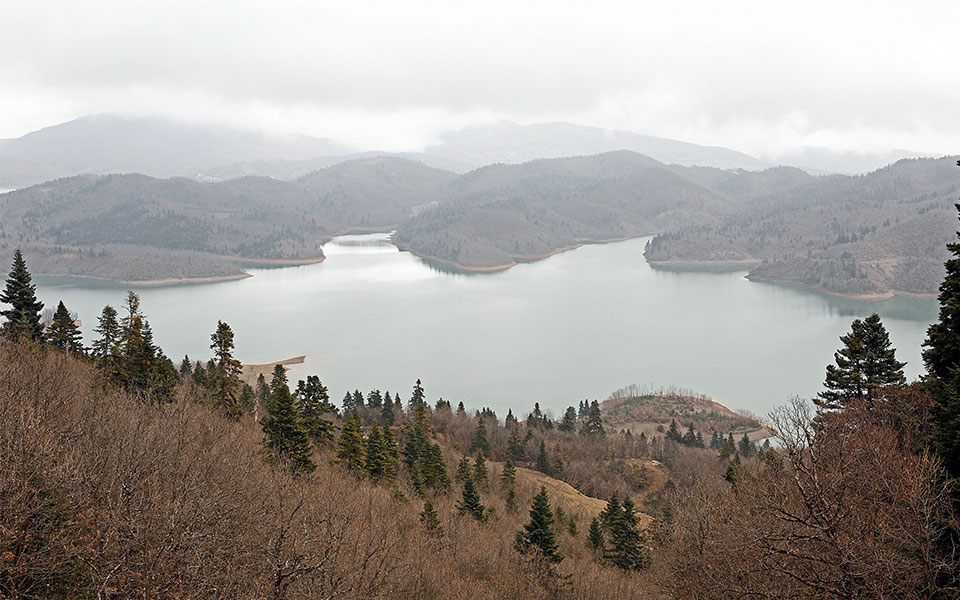
Lake Plastira
© Nikos Kokkas
The people of Karditsa are perhaps most proud of Lake Plastira. It was originally named Tavropou, but is today known to all by the name of the Karditsa politician who created it. Yes, it is man-made, but nonetheless it looks like a natural lake, with a rare beauty that calms your soul.
Aside from the therapeutic effect of just gazing over the water, people come here for various outdoor activities. Adults and kids over ten years old can rent paddle boats for one or for two, and Canadian canoes from Tavropos Activities (Kalivia Pezoulas, Tel. +30 697.774.0066). There is also an area where you can try your hand at archery.
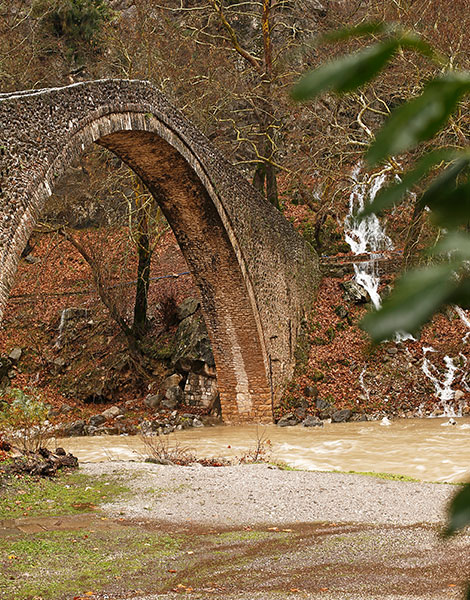
Pyli bridge
© Nikos Kokkas
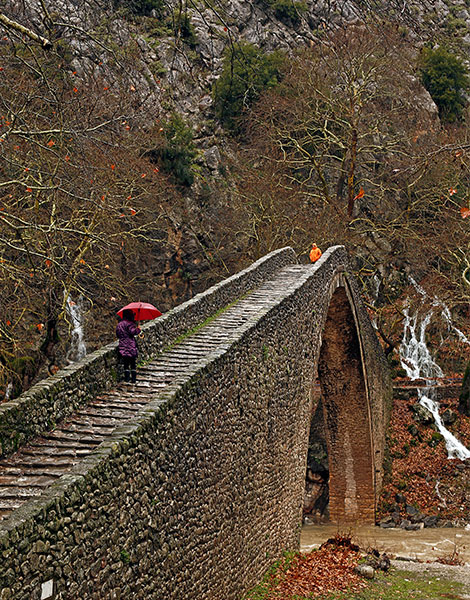
Pyli bridge
© Nikos Kokkas
About 35 kilometers from Karditsa, on the road that leads to the mountain resorts of Elati and Pertouli, you’ll find the Pyli bridge. It’s worth the half hour drive, if nothing else, for its sheer beauty. It makes you ponder why modern bridges are often so plain, or even ugly, when old bridges like this one are so pretty and non-disruptive to the beauty of the surrounding nature – yet still practical.
It is arched, 29 meters long and 13.3 meters high. Built by Saint Vissarion in 1514, it was an important structure, connecting the mountains of Itamos and Koziakas, and allowing the people who lived in mountain areas to reach the plain of Trikala. Walk up to its highest point and watch the rushing waters of the Portaikou River below.
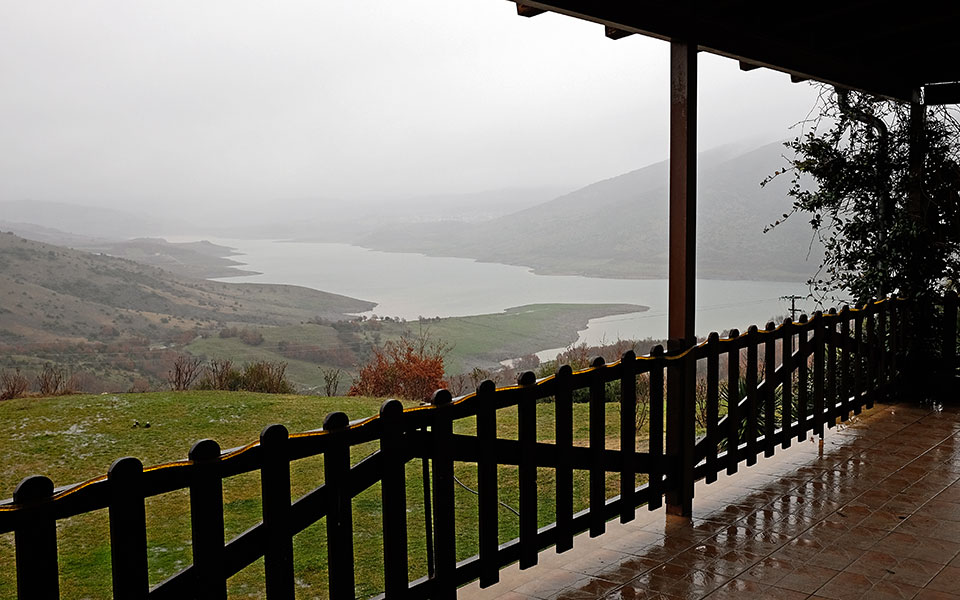
© Nikos Kokkas
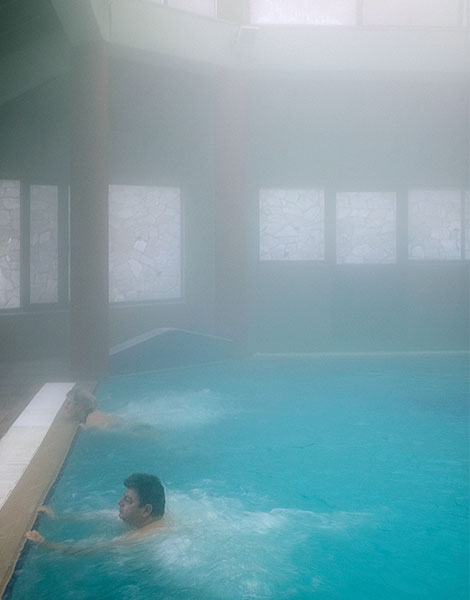
© Nikos Kokkas
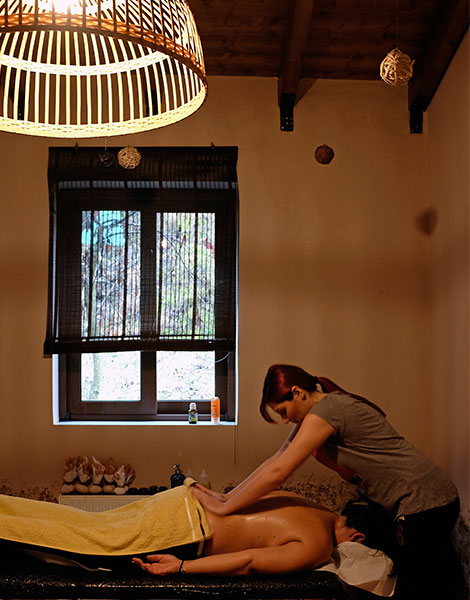
© Nikos Kokkas
The winters in central Greece are often harsh, which makes a visit to the Smokovo thermal springs a very pleasant outing. About 35 kilometers from Karditsa, the springs are said to have been discovered by the monks Moschos and Fragkos Stravoenoglou, who built the first simple facilities here in 1662. Another historic fun fact is that the Ottoman ruler Ali Pasha is known to have visited.
Today, the facilities are public and modern, and people from around Greece (when we were there we met three women from Larissa and a family from Trikala) come to bathe in the alkaline waters, which are said to work wonders for rheumatic, arthritic, and muscular pain.
Emerging from the spring the water is 40.2°C, while in the pool it cools down to 36-34°C. There is also a sauna, a hamam, a gym, and hand massage therapy available. In the summer months, there are also private hydromassage baths and inhalation rooms, known to help with asthma and sinus infections.
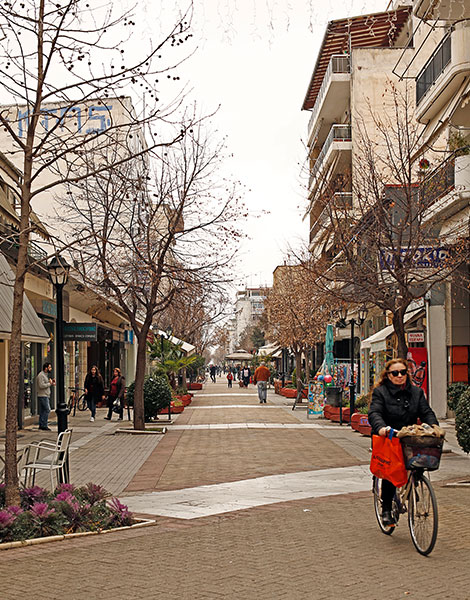
© Nikos Kokkas
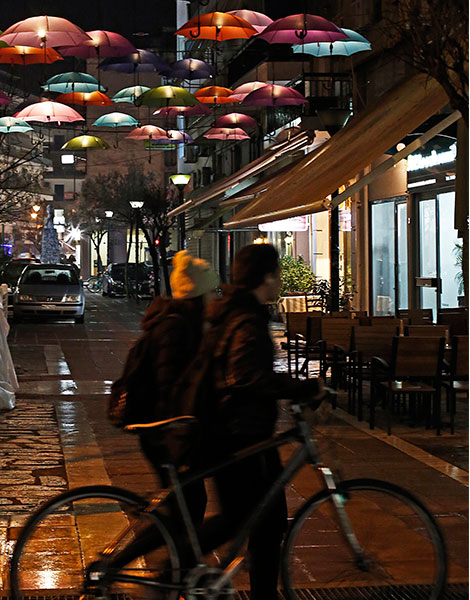
© Nikos Kokkas
About 293 kilometers and about 3 hours and 15 minutes from Athens via the E65 (be careful when using GPS, as some maps will take you to Karditsa by the old road). Petrol and tolls come to about €45.
Domotel Arni (4 Karaiskaki, Karditsa, Tel. +30 24410.22161) is perhaps the most famous hotel in Karditsa. It’s a historic hotel, operating since 1921 in an impressive rococo building. It features rooms of various sizes, the Arni Bistrot, and a conference space. From €65 for a double room and breakfast.
At Hotel Kierion (22 Blatsouka, Karditsa, Tel. +30 24410.71923), near the central square, you’ll find rooms for 1-3 people and suites. From €61 for a double room and breakfast.
Nevros Hotel Resort and Spa (Neohori, Tel. +30 24410.93201, +30 694.718.1196) is a four star hotel by Lake Plastira featuring a restaurant, a bar, and spa facilities with a jacuzzi and sauna. From €60 for a double room and breakfast.
Kazarma Hotel (Kalivia Filaktis, Tel. +30 2441092290), at Lake Plastira has 50 rooms including six suites (two junior, three executive, and one president). From €98 for a double room and breakfast on weekdays, and from €102 on weekends.
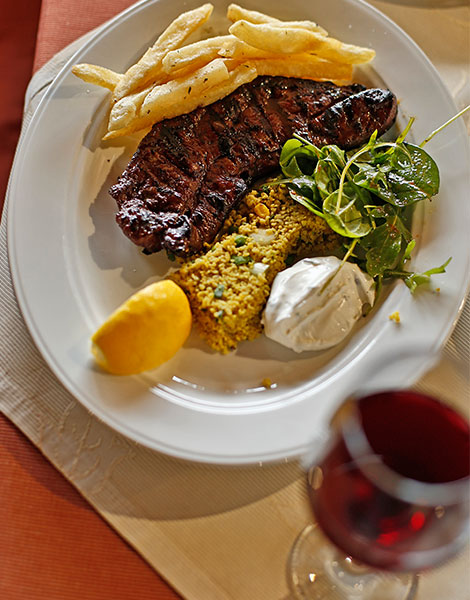
Drosostalia
© Nikos Kokkas
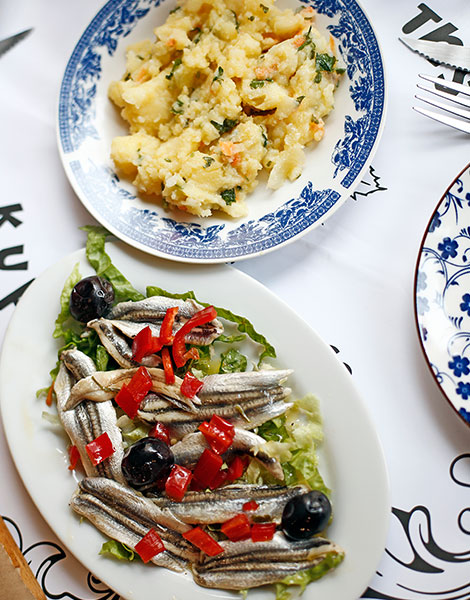
Steki tis Kyra-Giotas
© Nikos Kokkas
The area around Karditsa is famous for its quality meat. You are sure to enjoy it at the historic taverna Tsardaki at Lake Plastira (Tel. +30 24410.20413, +30 24410.20024). Serving delicious sausages, steak, liver, and much more since 1939, they know what they’re doing.
There are many places to eat well within the city as well. Steki tis Kyra-Giotas (19 Iezekiil, Tel. +30 24410.75071) stands out. Have a tsipouro and the marinated anchovies, tas kebab, or sausage with peppers.
Gkekas (3 Kolokotroni, Tel. +30 24410.23289) serves filling meze dishes at very reasonable prices.
For rakomelo (warm raki with honey and spices), rum and backgammon, visit Avli (Irakleitou 4-6); on Tuesdays after 23.00 they also host live music performances by the band Treloco (pop, rock, modern Greek, and disco).
Drosostalia (+30 698.252.2593) is a great option after a visit to the Smokovo springs. Drive a little further on to the artificial lake of Smokovo (be careful on this road on rainy days), where well-prepared meat is served in front of the gorgeous view.
Discover five mountain destinations where crisp...
At any time of year –...
The imposing mountain range of Agrafa...
Vargiani on Mount Parnassos offers stunning...